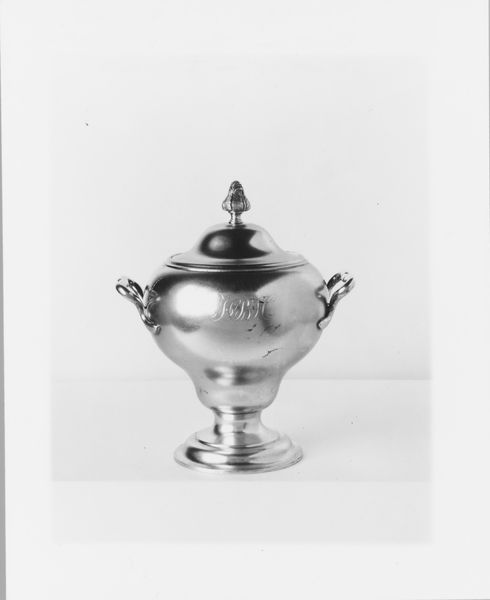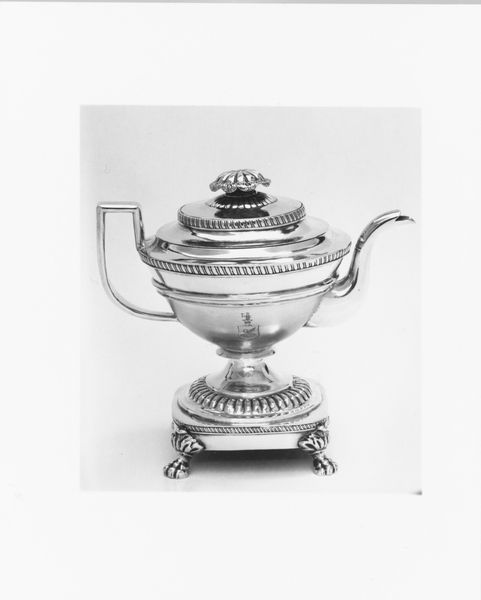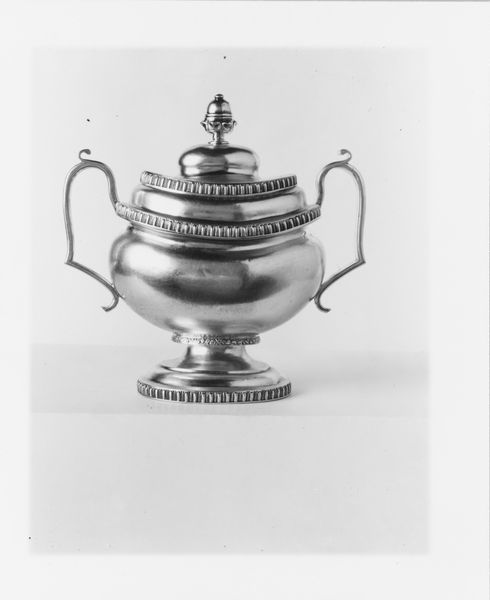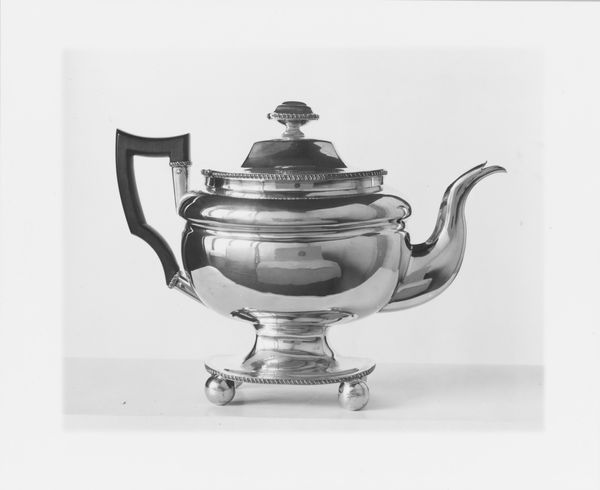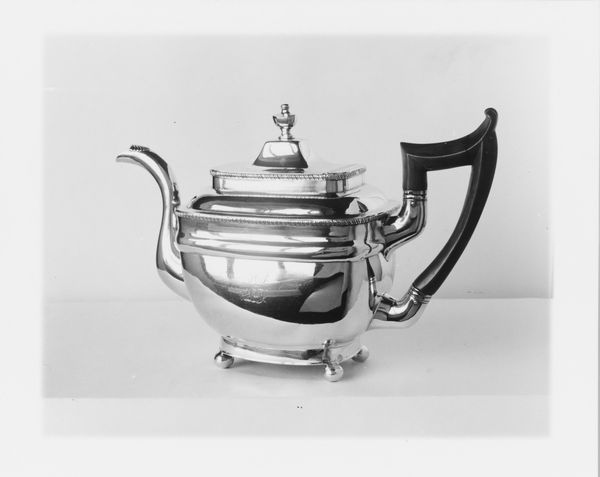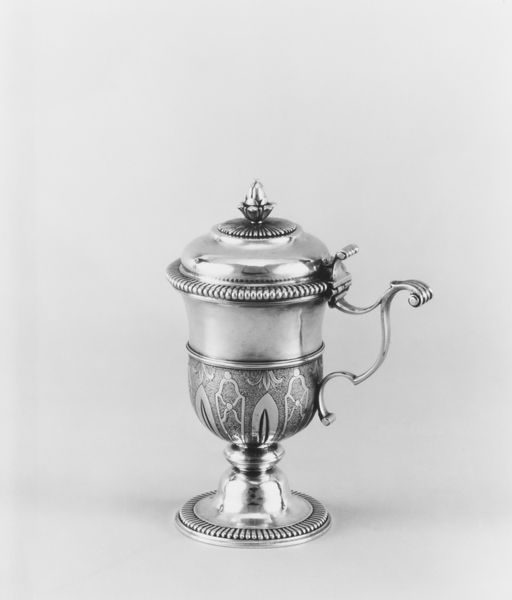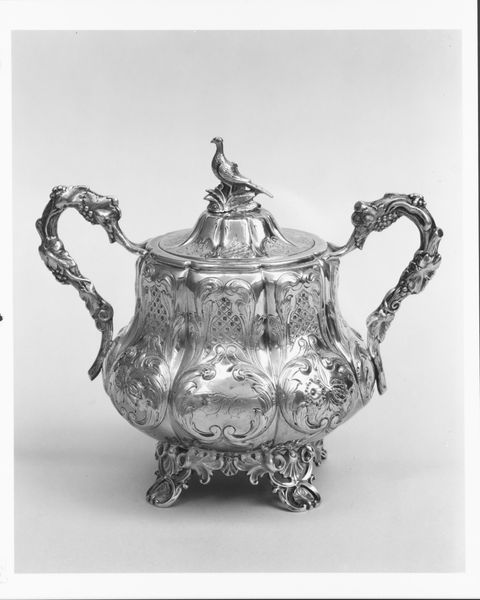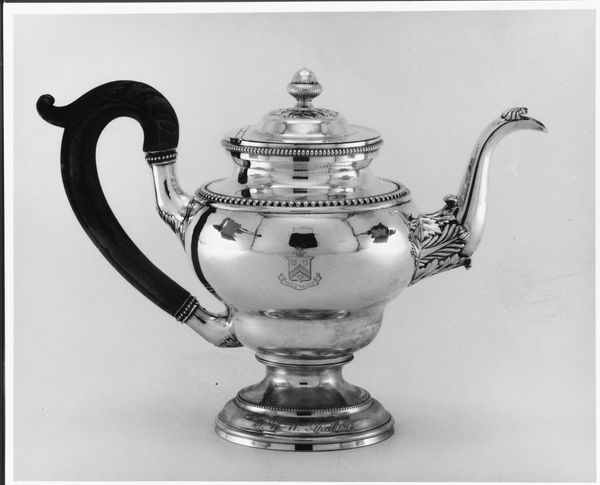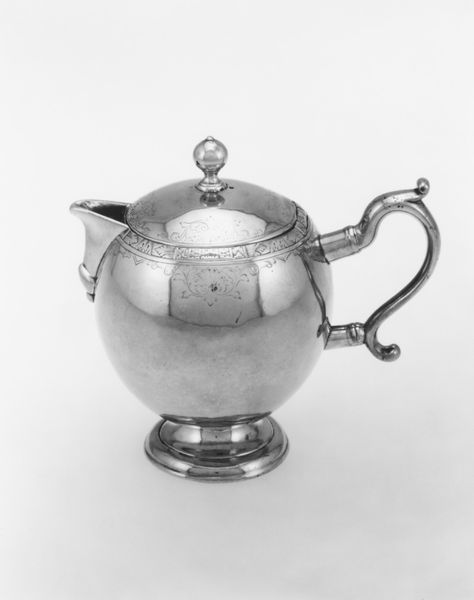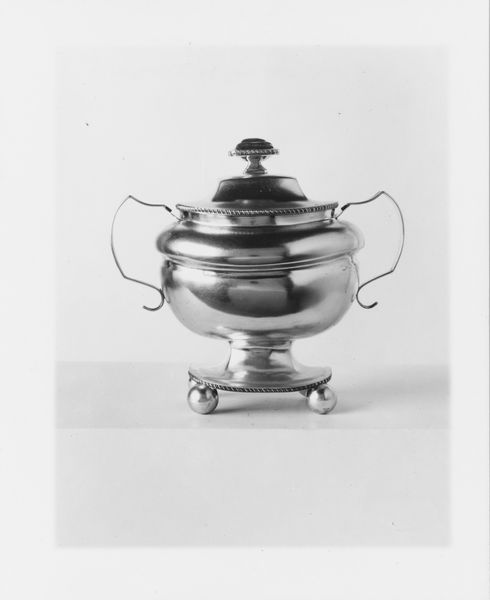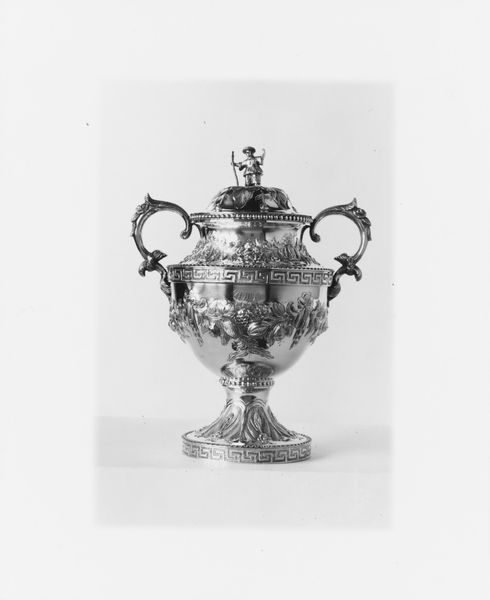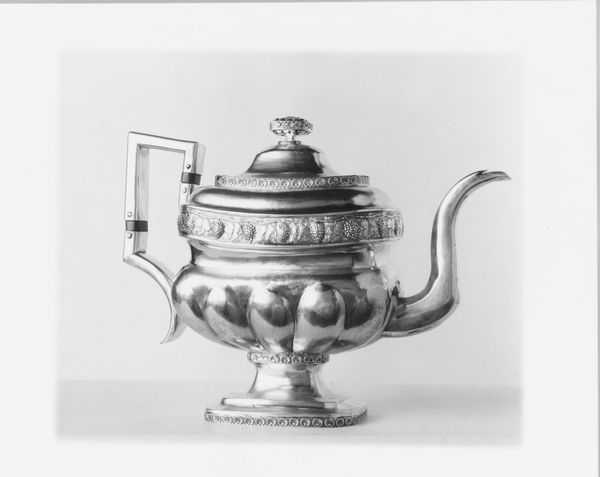
silver, metal, photography
#
silver
#
metal
#
photography
#
black and white theme
#
black and white
#
united-states
Dimensions: Overall: 8 1/4 x 9 1/2 x 5 9/16 in. (21 x 24.1 x 14.1 cm); 20 oz. 19 dwt. (651.6 g) Foot: Diam. 4 1/8 in. (10.5 cm)
Copyright: Public Domain
Editor: So, here we have a silver teapot from between 1840 and 1850, currently held at the Metropolitan Museum of Art. It's a beautiful object, the form so simple and refined; and yet there's something... austere about it. Almost like a monument. What do you make of it? Curator: It's fascinating to consider this teapot, not just as a functional object, but as a symbol of broader social shifts in 19th-century America. Tea drinking was already established, but industrialization changed the landscape. Think about it: silver signifies wealth, certainly, but the relative simplicity of its design, compared to, say, rococo examples, reflects a shifting sensibility influenced by burgeoning industry and nascent democratic ideals. Editor: So you're saying it reflects societal values, not just individual taste? Curator: Precisely. A growing middle class could afford such items. They were invested in a certain image of themselves – respectable, refined, but not necessarily ostentatious. A silver teapot becomes an emblem of aspiration and social mobility. Who might have owned this, and how might its presence have influenced domestic rituals and social gatherings? Editor: It makes you think about tea time as a carefully orchestrated performance, more than just a simple act of hospitality. Almost like, who had this on display and what was the importance of owning something that was made of silver. Curator: Absolutely. Think of the rise of photography around the same time - both democratized image-making but also shaped new forms of self-representation. What do you suppose this suggests about the social function of objects like this teapot? Editor: That things themselves were ways of declaring something – a political, economical, and a social idea – to other people. This piece really opens the window into the owner's position, doesn't it? Curator: It does. Every detail whispers about cultural values and the evolving landscape of American society. Thinking about function and form can tell a very powerful and diverse story of a specific era and time.
Comments
No comments
Be the first to comment and join the conversation on the ultimate creative platform.
